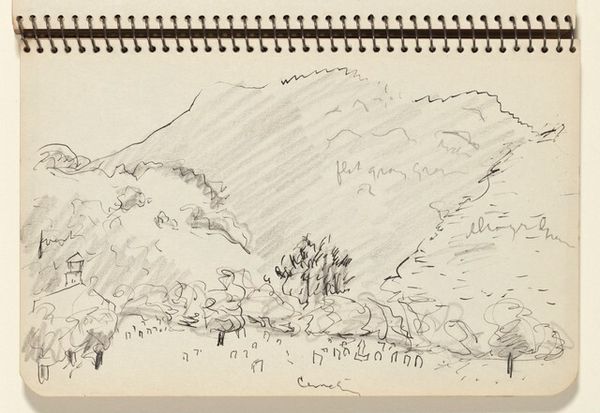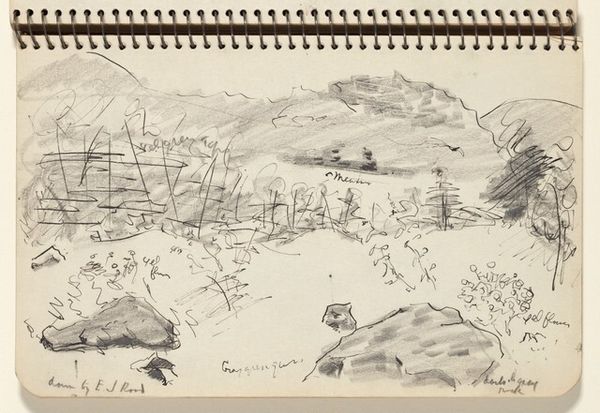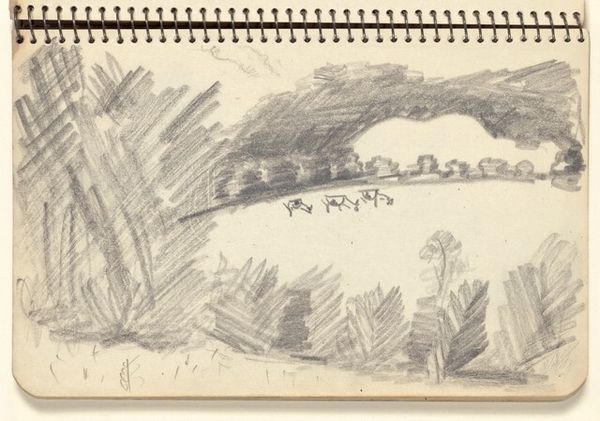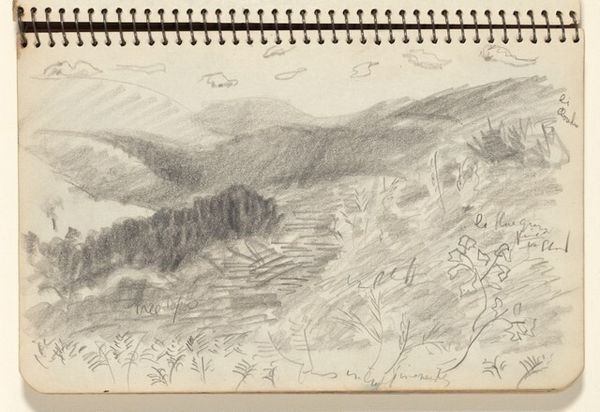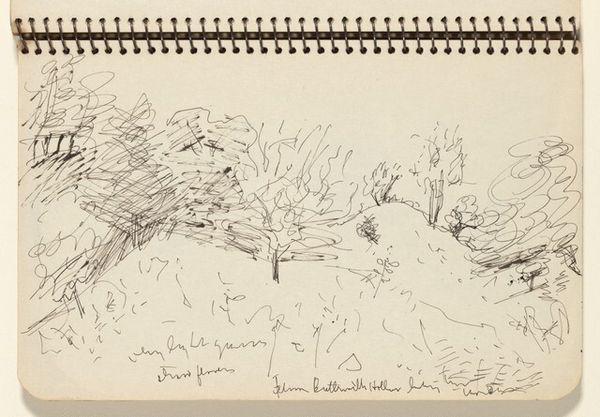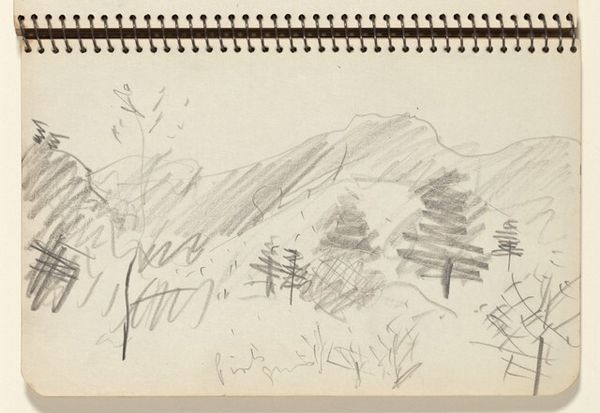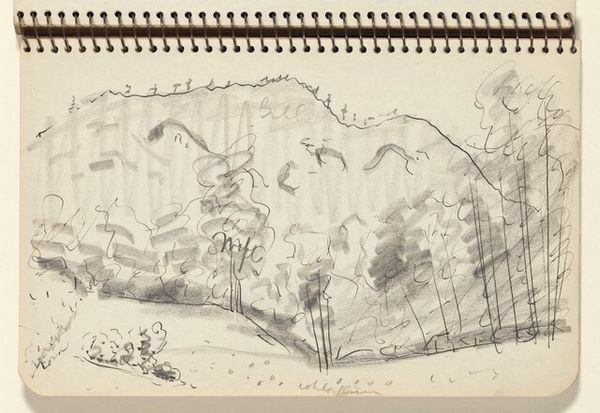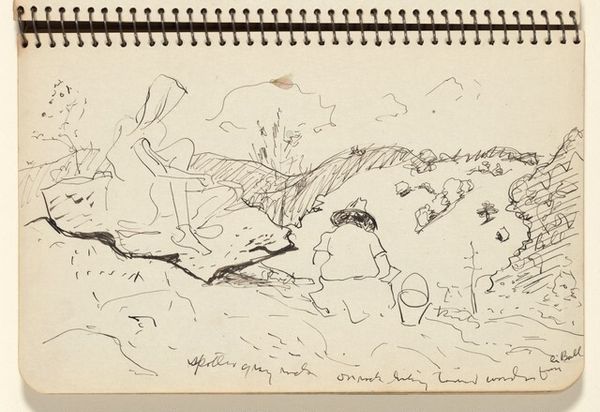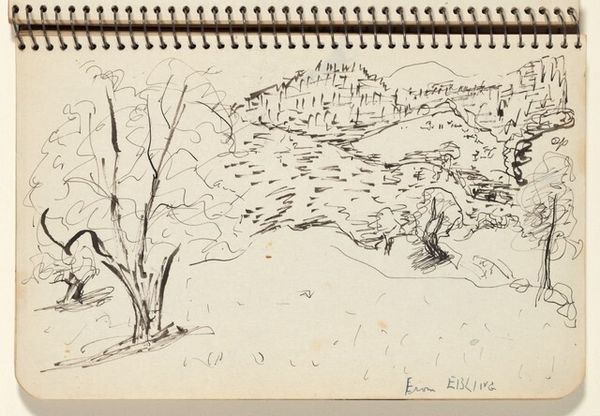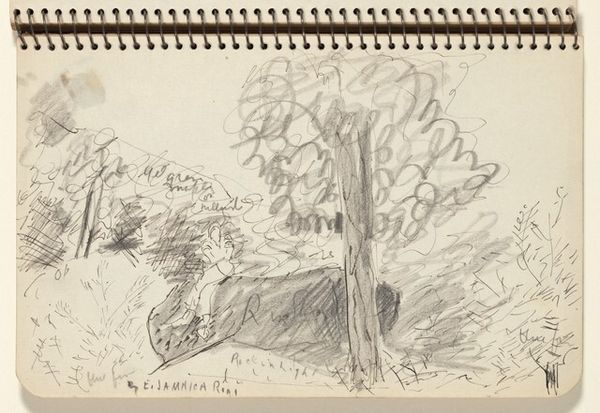
drawing, paper, ink
#
drawing
#
landscape
#
paper
#
ink
#
abstraction
#
modernism
Dimensions: overall: 12.8 x 20 cm (5 1/16 x 7 7/8 in.)
Copyright: National Gallery of Art: CC0 1.0
Curator: Immediately, I’m struck by the raw energy. It’s just ink on paper, a quick sketch, but it captures the essence of a vast landscape with incredible economy. Editor: Yes, there’s a sense of immediacy to this drawing, “Landscape with Distant Hills,” created in 1943 by Milton Avery. Avery often explored landscapes through simplified forms, and here we see that distillation process laid bare. It speaks to broader discussions within modernism regarding simplification and essence. What narratives were influencing Avery as he turned to nature? Curator: The swirling lines he uses for the foliage evoke a sense of movement, like the wind rustling through the trees. And the stark contrast between the dark ink and the light paper gives it a graphic quality, almost like a woodcut. Those hills in the background— they could symbolize constancy, the enduring nature that dwarfs the events of human history happening in 1943. Were they a visual escape from the world? Editor: That's insightful. I'm intrigued by his deliberate abstraction, especially of the trees. Notice how each element is suggested rather than meticulously rendered? Trees, rather than resembling a botanical study, have this feeling of protective spirits populating the field of our perception. Also note how, within a very limited use of tone and shade, he can represent both volume and emptiness; it reveals so much about Avery’s mastery over symbols, allowing a connection between the temporal world, which is a field, with the vast landscape that dwarfs it, thus evoking contemplation. Curator: Absolutely. And this kind of rapid notation has a direct lineage from the more spontaneous approaches in earlier landscape practices— it makes you think about accessibility, too. Avery is asking viewers to rethink art as something less refined or lofty. If we think about the role of drawing in working-class movements, such as those depicting daily lives, this little landscape suggests the same impulse to be grounded. Editor: A reminder that art can be found in the everyday, perhaps? Well, viewing this artwork has encouraged us to appreciate the power of landscape to evoke deeper stories, both personal and socio-political, I would say. Curator: Definitely. And to see the beauty in simplicity.
Comments
No comments
Be the first to comment and join the conversation on the ultimate creative platform.
